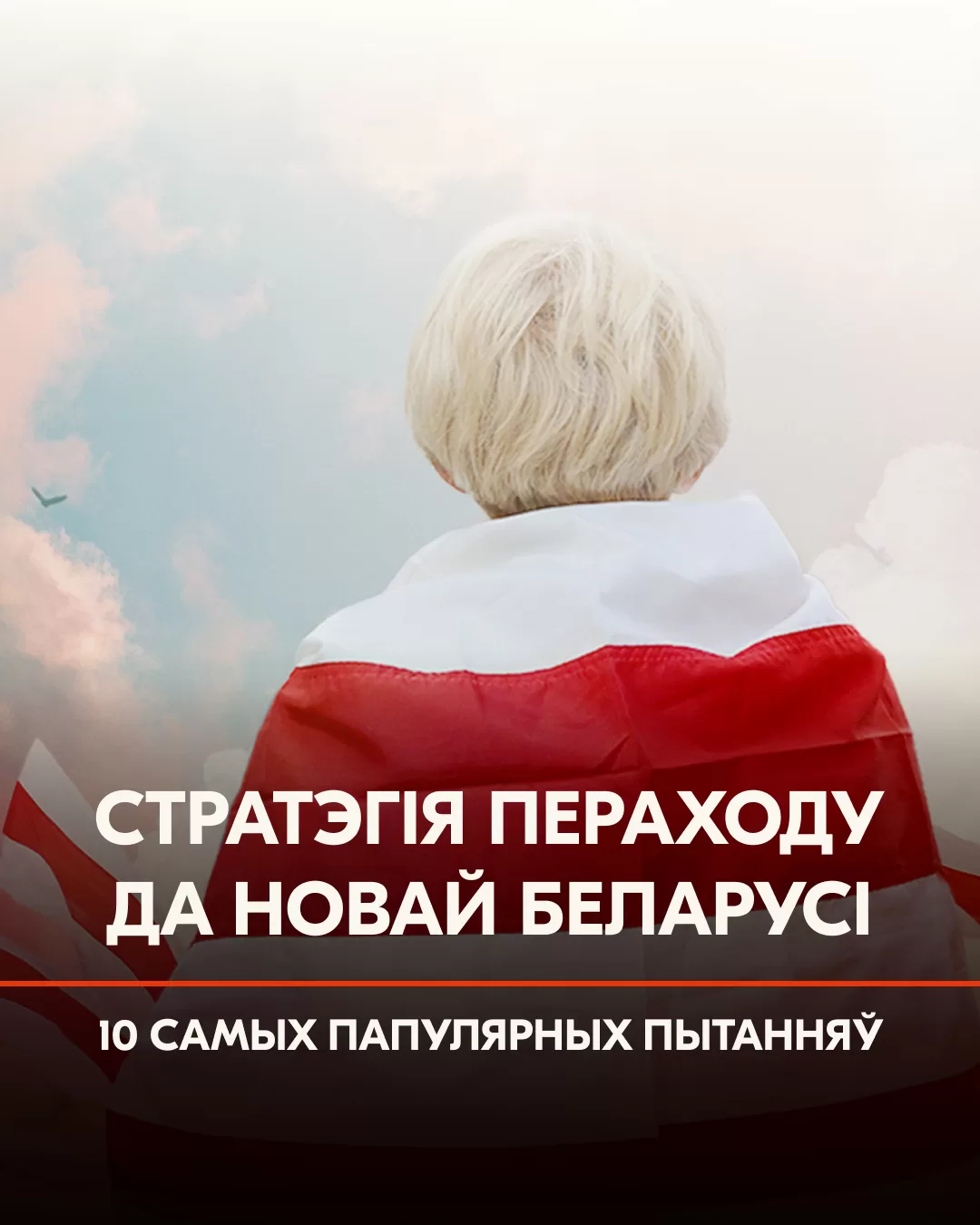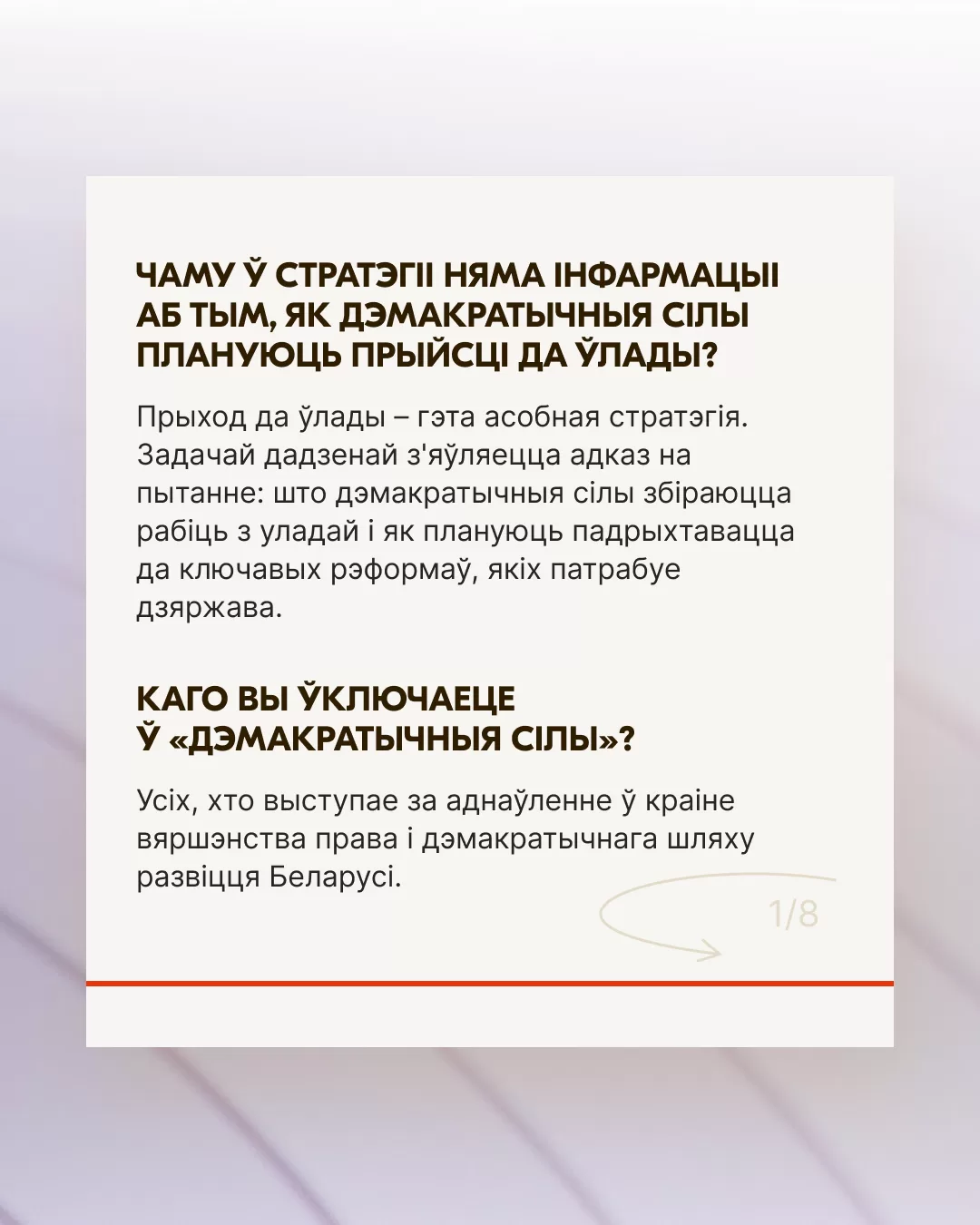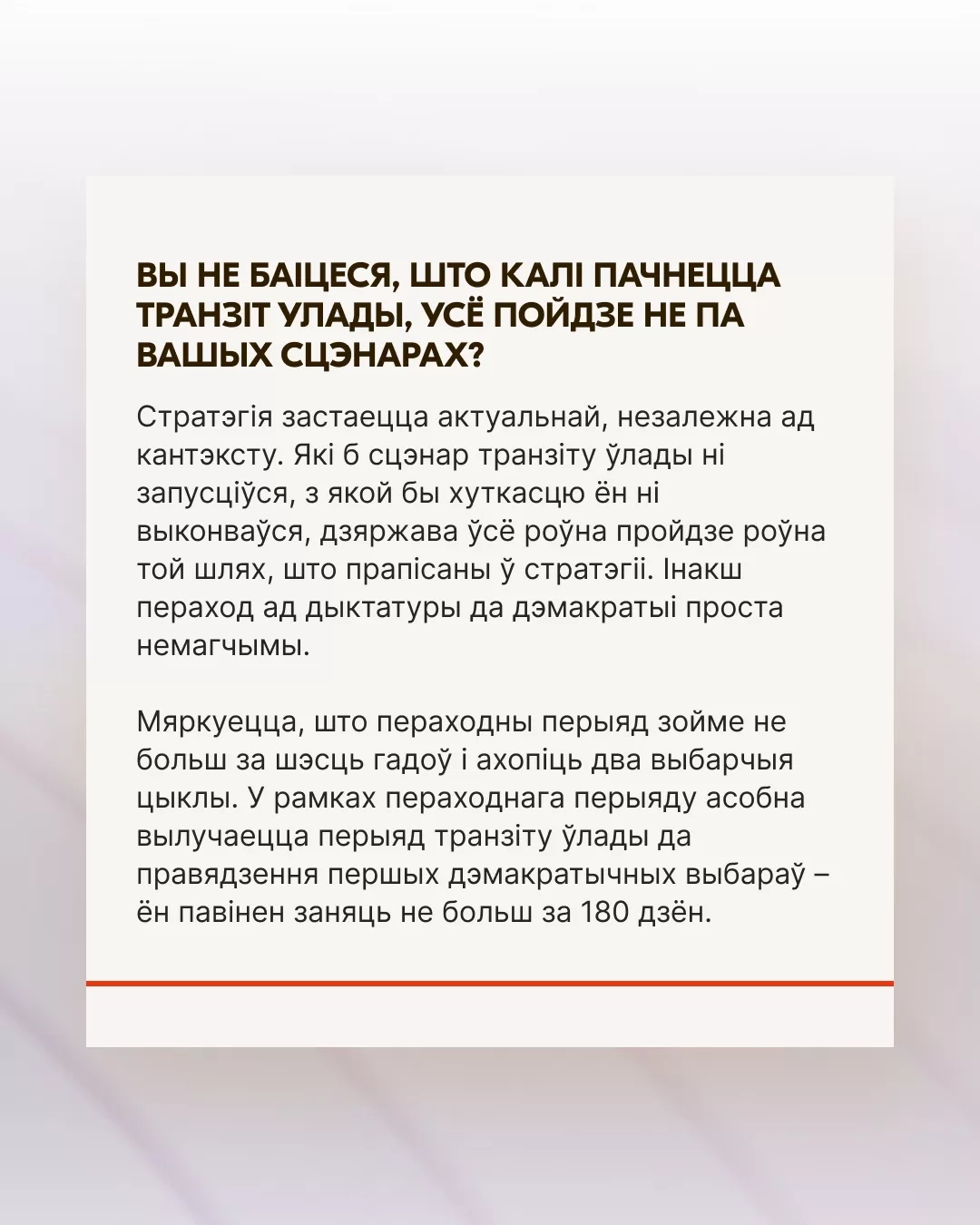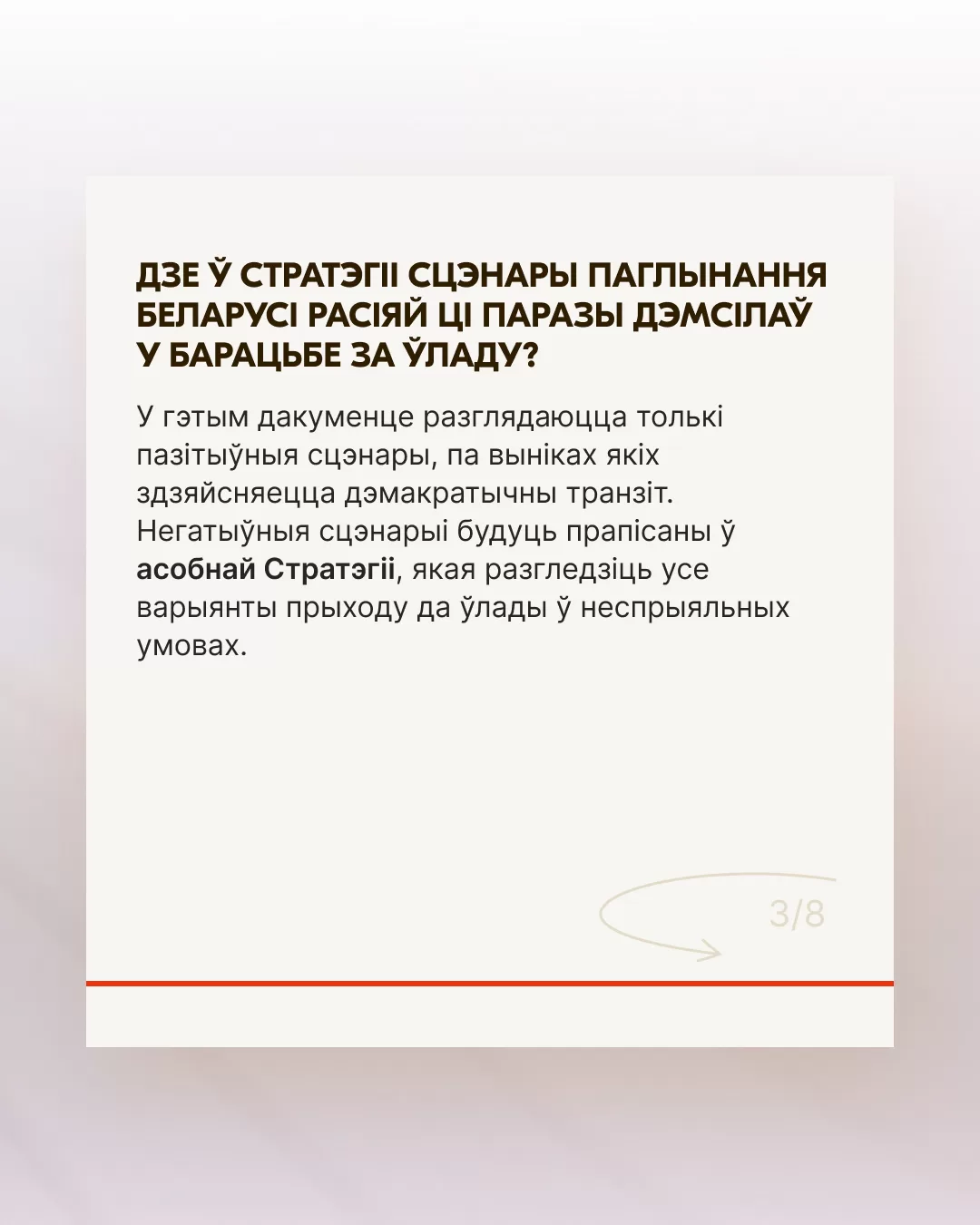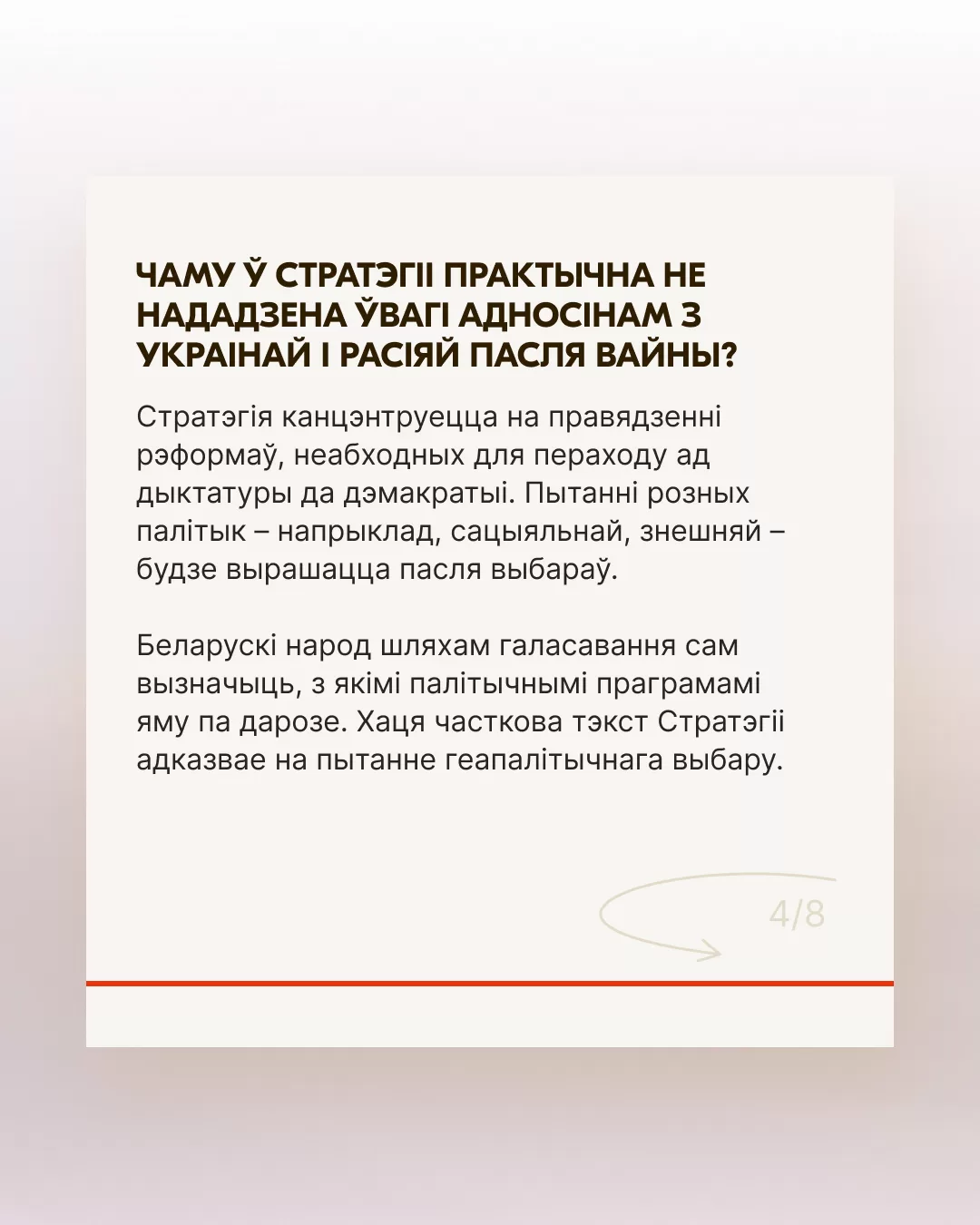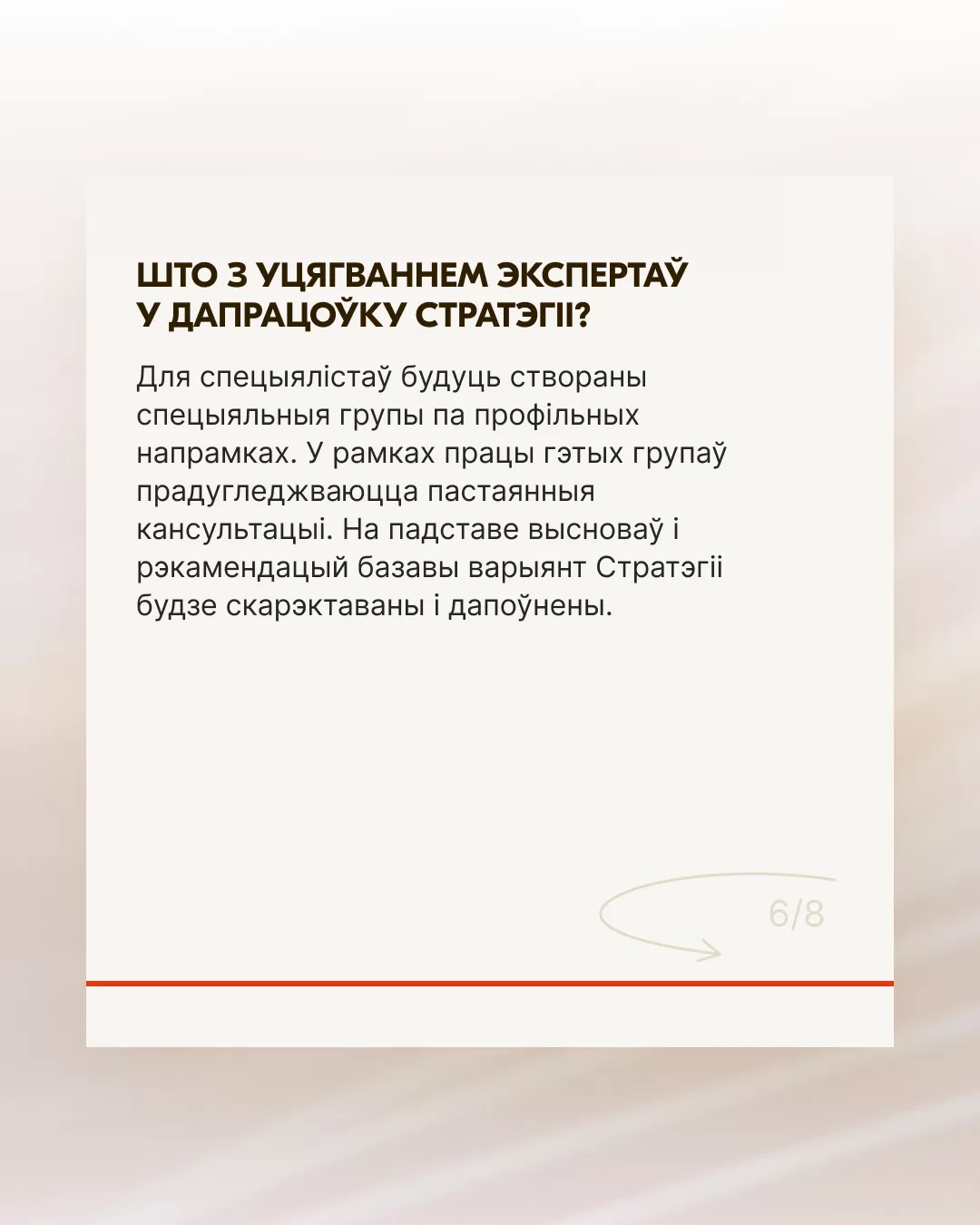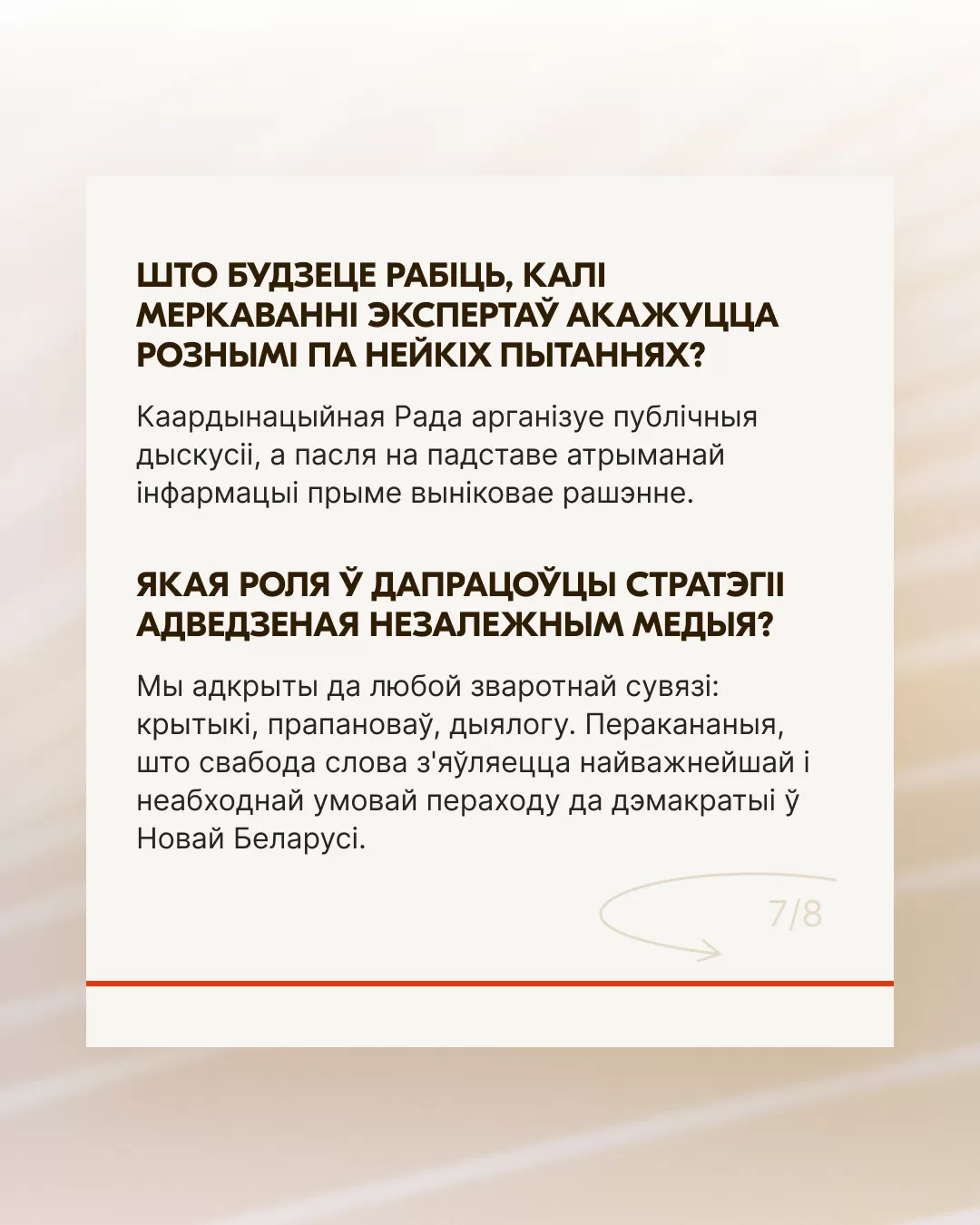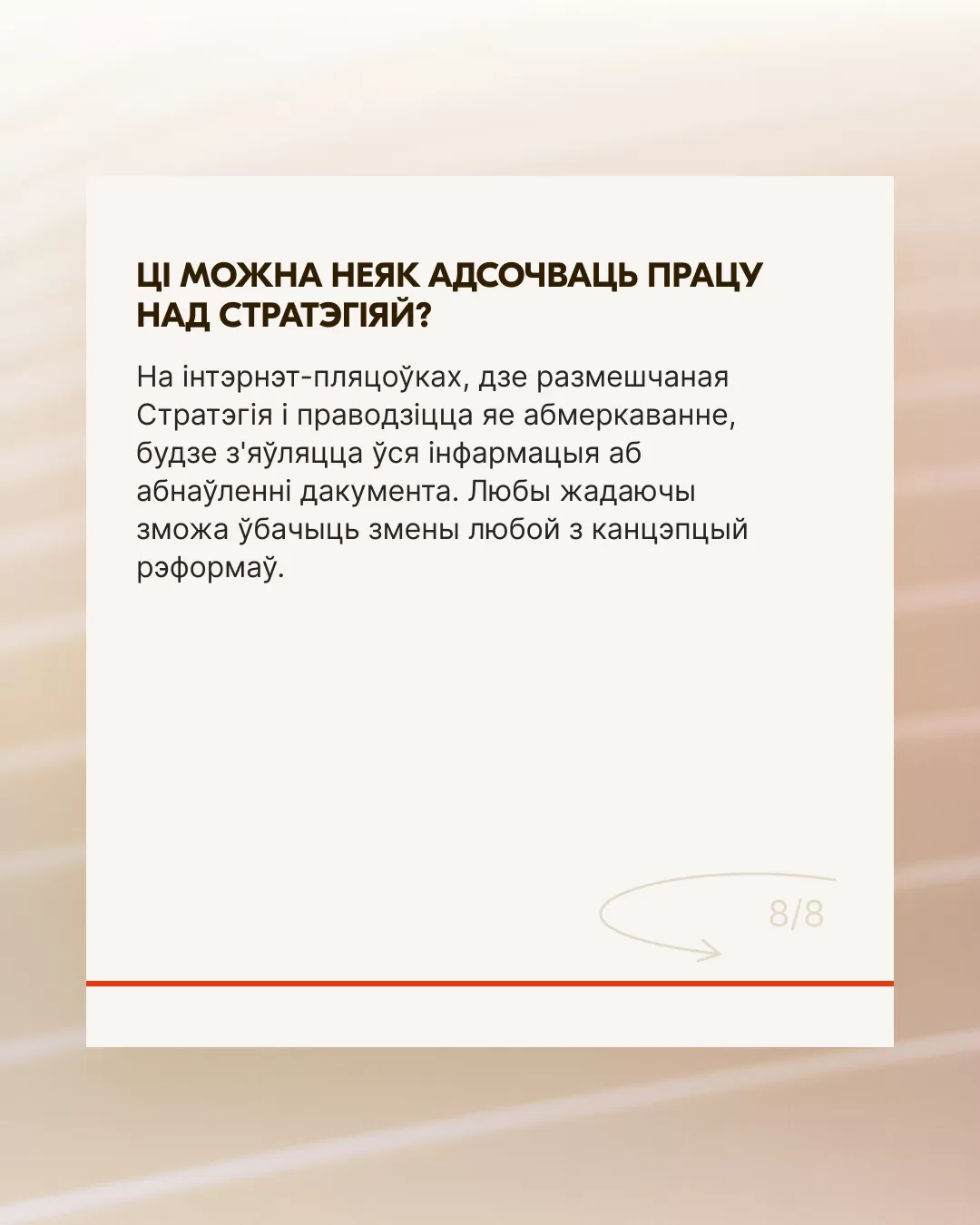In December, Sviatlana Tsikhanouskaya’s Office, in collaboration with the United Transitional Cabinet, the Coordination Council, and numerous experts, developed the New Belarus Transition Strategy and presented it for public discussion. The document outlines possible scenarios for a democratic transition in Belarus. Additionally, it highlights the main directions of reforms that will contribute to a gradual and smooth transition to a new governance system.
Find below the answers to the most frequently asked questions submitted by Belarusians in the feedback chatbot since the presentation of the strategy a month ago.
- Why does the strategy not address how the democratic forces can come to power? Coming to power is a separate strategy. The New Belarus Transition Strategy focuses on how the democratic forces intend to deal with the governance system after the transition and prepare for key reforms.
- Who exactly is included in the “democratic forces”? Anyone who stands for the rule of law and a democratic future in Belarus.
- What if the transition does not go according to the scenarios? The strategy remains relevant regardless of the context, and the country will follow the outlined path even if the transition deviates from expected scenarios. Otherwise, a democratic transition is not possible. It is expected that the transition period will last up to six years and will encompass two electoral cycles. Within the transition period, a separate phase is designated for the first democratic elections, which should be held no later than 180 days after the transition.
- Why does the strategy not address negative scenarios, like absorption by Russia or a democratic forces’ defeat? The strategy only addresses positive scenarios of democratic transition. Negative scenarios will be addressed in a separate strategy that considers all ways of coming to power in a hostile environment.
- Why is there so much focus on relations with Ukraine and Russia after the war in the strategy? The strategy focuses on the reforms needed immediately after the transition. Major choices, like social and foreign policy, will be addressed after the first election. Still, the strategy partly answers the question of Belarus’ geopolitical choice.
- Who is responsible for implementing the strategy? We hope for initiatives from political and expert groups interested in achieving the democratic transition and implementing separate fields of the strategy. Sviatlana Tsikhanouskaya’s Office, the Coordination Council, and the United Transitional Cabinet will coordinate the public discussion.
- What role do experts play in developing the strategy? Working groups will be created for experts in various fields, and their input will contribute to refining and enhancing the strategy.
- What if expert opinions differ on certain issues? Public discussions and consultations organized by the Coordination Council will be required for a final decision which will be made based on the expert opinions received.
- What role do independent media play in the strategy’s development? We are open to any feedback, including criticism, proposals, and dialogue. Freedom of speech is crucial for the transition to democracy in New Belarus.
- Can progress on the strategy be tracked online? Updates on the strategy will be available on all online platforms where the document is discussed, allowing anyone interested to see changes in the reform concepts.
